Palmitoyl tetrapeptide-7
- CAS NO.:221227-05-0
- Empirical Formula: C34H62N8O7
- Molecular Weight: 694.91
- EINECS: 000-000-0
- SAFETY DATA SHEET (SDS)
- Update Date: 2025-03-17 18:28:27
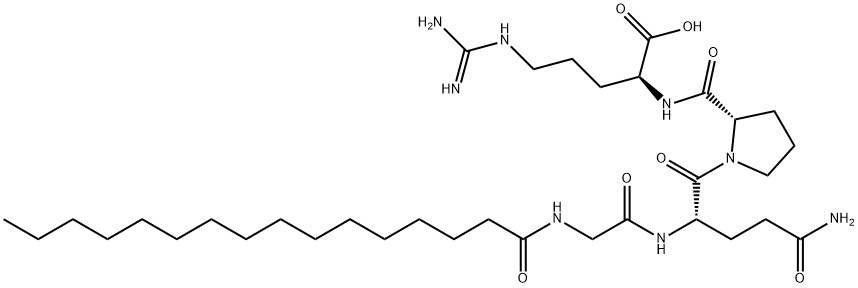
What is Palmitoyl tetrapeptide-7?
Description
Palmitoyl tetrapeptide-7, part of Matrixyl 3000, is a skin repair ingredient with anti-aging properties. It has anti-aging and stabilizing effects and is often used in cosmetics. It is a synthetic peptide composed of four amino acids (glycine-glutamine-proline-arginine) and palmitic acid. The addition of the fatty acid palmitic acid enhances the stability and permeability of the ingredient to the skin.
Benefits
Palmitoyl tetrapeptide-7 is known to trigger the regeneration of collagen fibres in the skin, so it induces the natural production of collagen in the skin. After regular application, skin appearance can be changed considerably. It also restores moisture and also reduces roughness, fine lines, and wrinkles formed on the skin. It can penetrate deep layers of the skin and reduce the production of interleukins (IL). Interleukins are markers of any inflammation within the body. They are produced as a response to damage caused by external factors, like pollutants, free radicals, or other chemicals to the skin. Palmitoyl tetrapeptide-7 heals the skin and reduces the effect of inflammation. It conditions and rejuvenates the skin and makes it healthier.
Mechanism of action
Palmitoyl tetrapeptide-7 reduces the production of interleukin-6 (IL-6) by keratinocytes and fibroblasts, key cells in the skin. Interleukin-6 is a mediator of inflammation that causes faster degradation of extracellular matrix components, promotes wrinkle formation and reduces skin firmness and elasticity. Reduces IL-6 and other pro-inflammatory agents palmitoyl tetrapeptide-7, protecting extracellular matrix components from degradation, thus making the skin look younger.
Side Effects
Palmitoyl tetrapeptide-7 is used in beauty products and cosmetics to suppress the production of excess interleukins, the chemical messengers that trigger the body's acute inflammatory response. This can lead to glycation damage, or the process by which glucose links with proteins and causes them to bind together, stiffening tissues. This negatively affects the skin's support system, comprised of collagen, elastin, and other proteins, and leads to wrinkles, sagging, and uneven skin tone.
Properties of Palmitoyl tetrapeptide-7
| Density | 1.26±0.1 g/cm3(Predicted) |
| storage temp. | under inert gas (nitrogen or Argon) at 2-8°C |
| pka | 3.60±0.21(Predicted) |
| form | Solid |
| color | White to off-white |
Safety information for Palmitoyl tetrapeptide-7
Computed Descriptors for Palmitoyl tetrapeptide-7
| InChIKey | IHRKJQSLKLYWBQ-QKDODKLFSA-N |
| SMILES | C(O)(=O)[C@H](CCCNC(N)=N)NC(=O)[C@@H]1CCCN1C(=O)[C@H](CCC(N)=O)NC(=O)CNC(=O)CCCCCCCCCCCCCCC |
New Products
3-Iodophenylacetic acid 3-Pyridineacetonitrile, α-hydroxy- 2-Propanamine, 1-chloro-, hydrochloride (9CI) 3-(hexyloxy)-4-(pyridin-3-yl)-1,2,5-thiadiazole 2-Hexyn-1-ol Dibenzo-18-crown-6 Nickel(II) perchlorate hexahydrate, 98% 4-Bromophenylacetonitrile, 95% 3-Bromo-4-fluoroaniline, 97% Sodium tetraborate decahydrate, 98% Palladium(II) acetate, trimer, Pd 99% 4-Bromo-2-chlorotoluene, 97% N N Dimethylformamide Dimethyl Acetal (Dmf Dma) 2,3-Dichloro Benzoyl Cyanide [Side Chain] Bis(2-Chloroethyl) Amine Hydrochloride L-Glutamic Acid Diethyl Ester Hydrochloride 5-(Difluoromethoxy)-2-Mercaptobenzimidazole 1-Ethyl-3-(3-Dimethylaminopropyl)-Carbodiimide Hydrochloride [EDC Hcl] 1,4-Napthoquinone Bromoiodomethane Sodium Bicarbonate Methylene Dichloride (MDC) Ethyl Acetate Indole-3-Carbinol (I3C)Related products of tetrahydrofuran
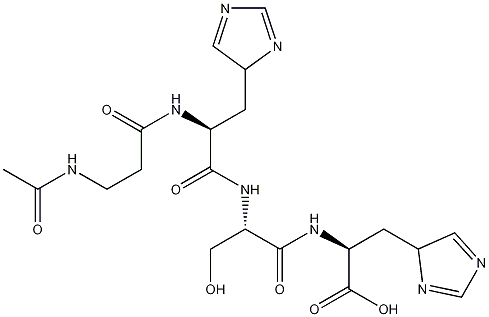
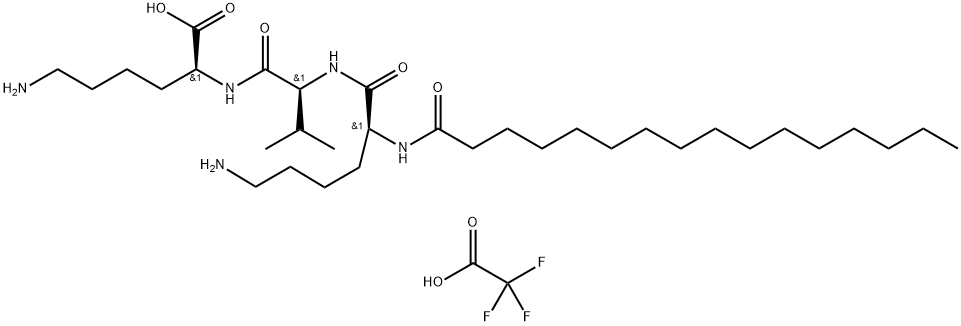
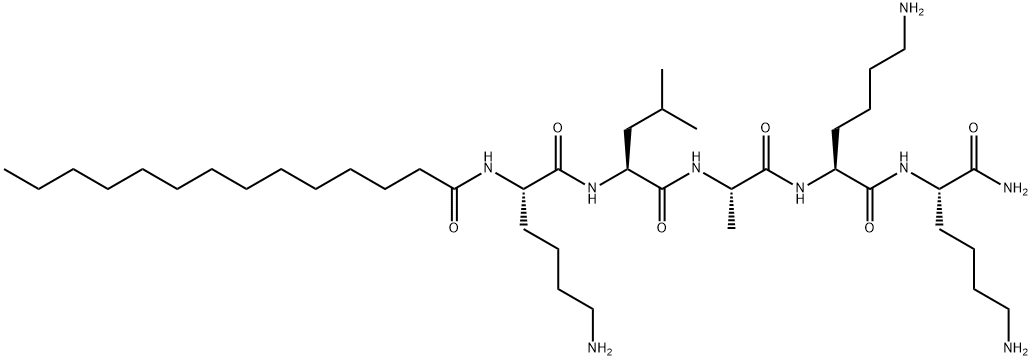

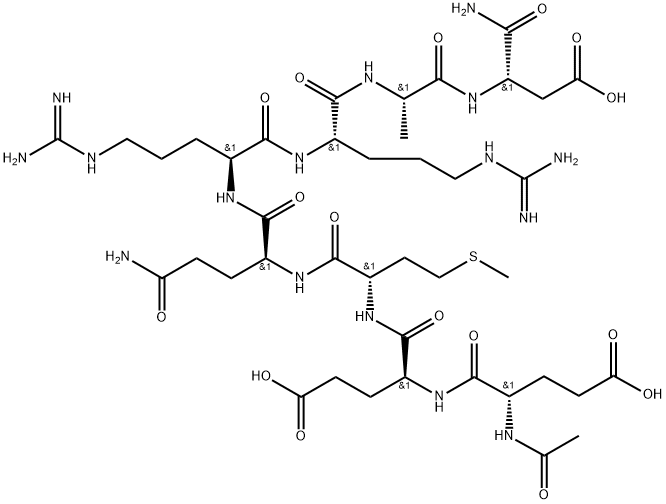
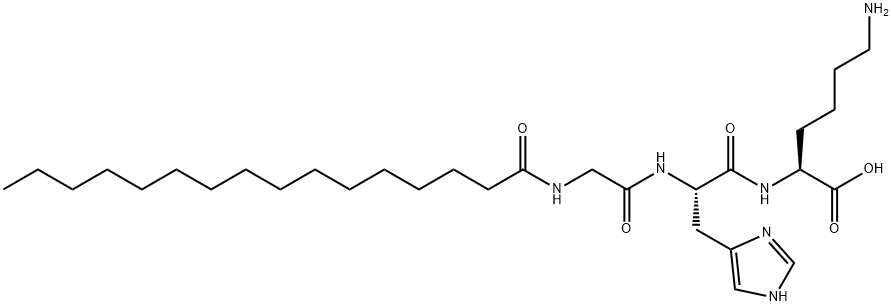
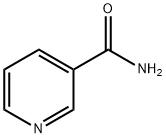
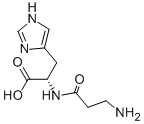
You may like
-
 Pal-gly-gln-pro-arg-oh 95% CAS 221227-05-0View Details
Pal-gly-gln-pro-arg-oh 95% CAS 221227-05-0View Details
221227-05-0 -
 17604-74-9 3-Pyridineacetonitrile, α-hydroxy- 98+View Details
17604-74-9 3-Pyridineacetonitrile, α-hydroxy- 98+View Details
17604-74-9 -
 131987-69-4 98+View Details
131987-69-4 98+View Details
131987-69-4 -
 Cyclohexane, (2-propynyloxy)- 67967-07-1 98+View Details
Cyclohexane, (2-propynyloxy)- 67967-07-1 98+View Details
67967-07-1 -
 764-60-3 2-Hexyn-1-ol 98+View Details
764-60-3 2-Hexyn-1-ol 98+View Details
764-60-3 -
 2-Propanamine, 1-chloro-, hydrochloride (9CI) 98+View Details
2-Propanamine, 1-chloro-, hydrochloride (9CI) 98+View Details
5968-21-8 -
 3-Iodophenylacetic acid 1878-69-9 98+View Details
3-Iodophenylacetic acid 1878-69-9 98+View Details
1878-69-9 -
 132945-75-6 (S)-1-Boc-3-methanesulfonyloxy-pyrrolidine 98+View Details
132945-75-6 (S)-1-Boc-3-methanesulfonyloxy-pyrrolidine 98+View Details
132945-75-6
